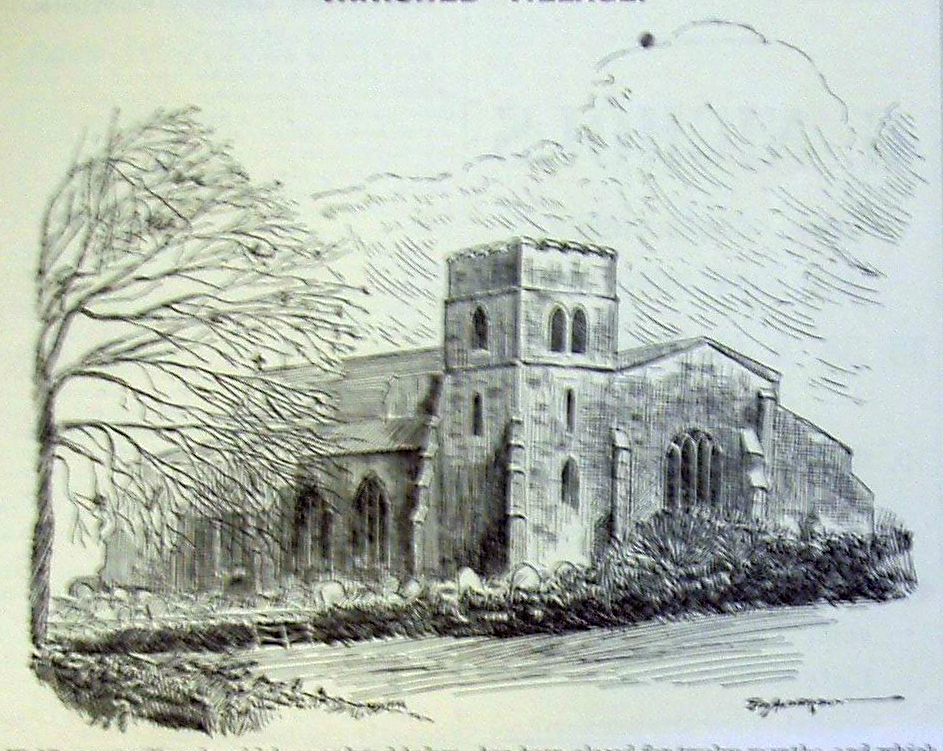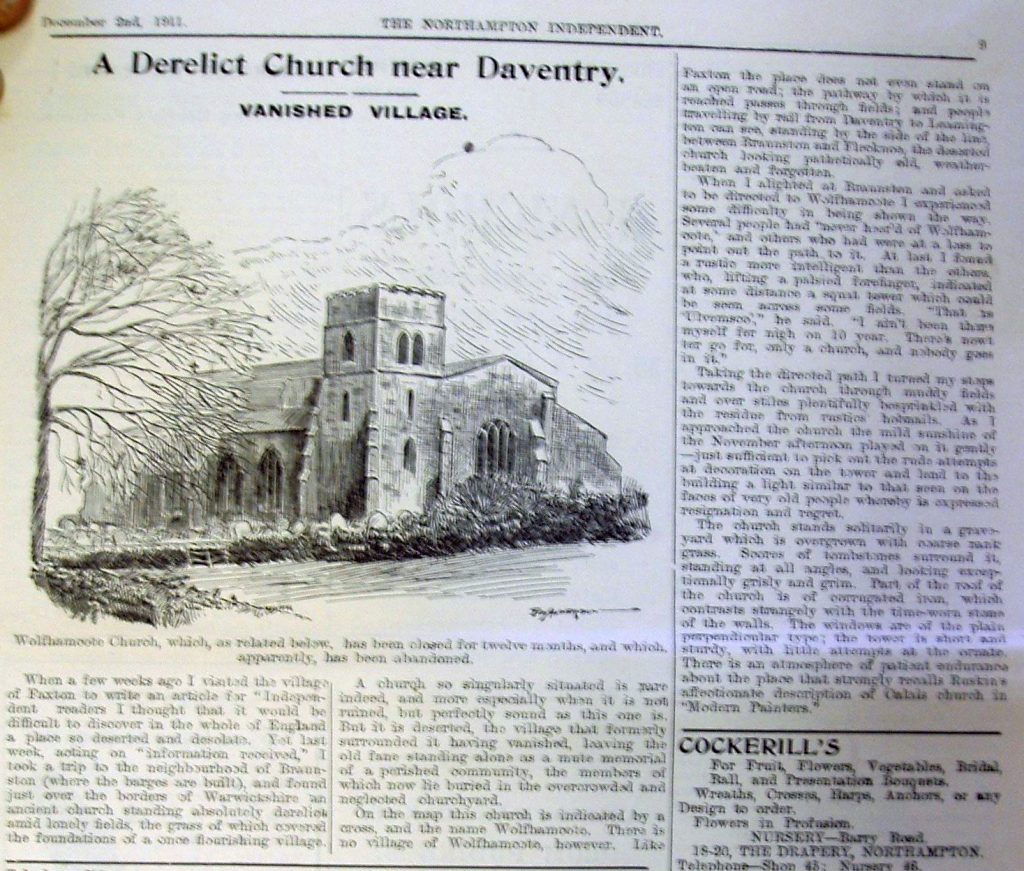A Derelict Church near Daventry – a Vanished Village
This article appeared in the The Northampton Independent, dated December 2nd, 1911. It depicts a church neglected, grim and resigned, having been closed one year earlier. The church was reopened the following year, in 1912, on the request of local residents.

When a few weeks ago I visited the village of Paxton to write an article for “Independent readers” I thought that it would be difficult to discover in the whole of England a place so deserted and desolate. Yet last week, acting on “information received,” I took a trip to the neighbourhood of Braunston (where the barges are built) and found just over the borders of Warwickshire an ancient church standing absolutely derelict amid lonely fields, the grass of which covered the foundations of a once flourishing village.
A church so singularly situated is rare indeed, and more especially when it is not ruined, but perfectly sound as this one is. But it is deserted, the village that formerly surrounded it having vanished, leaving the old fane standing alone as a mute memorial of a perished community, the members of which now lie buried in the overcrowded and neglected churchyard.
On the map this church is indicated by a cross and the name Wolfhamcote. There is no village of Wolfhamcote, however. Like Paxton the place does not even stand on an open road; the pathway by which it is reached passes through fields; and people travelling by rail from Daventry to Leamington can see, standing by the side of the line, between Braunston and Flecknoe, the dismantled church looking pathetically old, weather-beaten and forgotten.
When I alighted at Braunston and asked to be directed to Wolfhamcote I experienced some difficulty in being shown the way. Several people had “never hear’d of Wolfhamcote” and others who had were at a loss to point out the path to it. At last I found a rustic more intelligent than others, who, lifting a palsied forefinger, indicated at some distance a squat tower which could be seen across some fields. “That is ‘Ulvomsco'”, he said. “I ain’t been there myself for nigh on 10 year. There’s nowt ter go for, only a church, and nobody goes in it”.
Taking the directed path I turned my steps towards the church through muddy fields and over stiles plentifully besprinkled with the residue from rustics’ hobnails. As I approached the church the mild sunshine of November afternoon played on it gently – just sufficient to pick out the rude attempts at decoration on the tower and lend to the building a light similar to that seen on the faces of very old people whereby is expressed resignation and regret.
The church stands solitarily in a graveyard which is overgrown with native rank grass. Scores of tombstones surround it, standing at all angles, and looking exceptionally grisly and grim. Part of the roof of the church is of corrugated iron, which contrasts strangely with the time-worn stones of the walls. The windows are of the plain perpendicular type; the tower is short and sturdy, with little attempts at the ornate. There is an atmosphere of patient endurance about the place that strongly recalls Ruskin’s affection description of Calais church in “Modern Painters”.

Author is unknown.